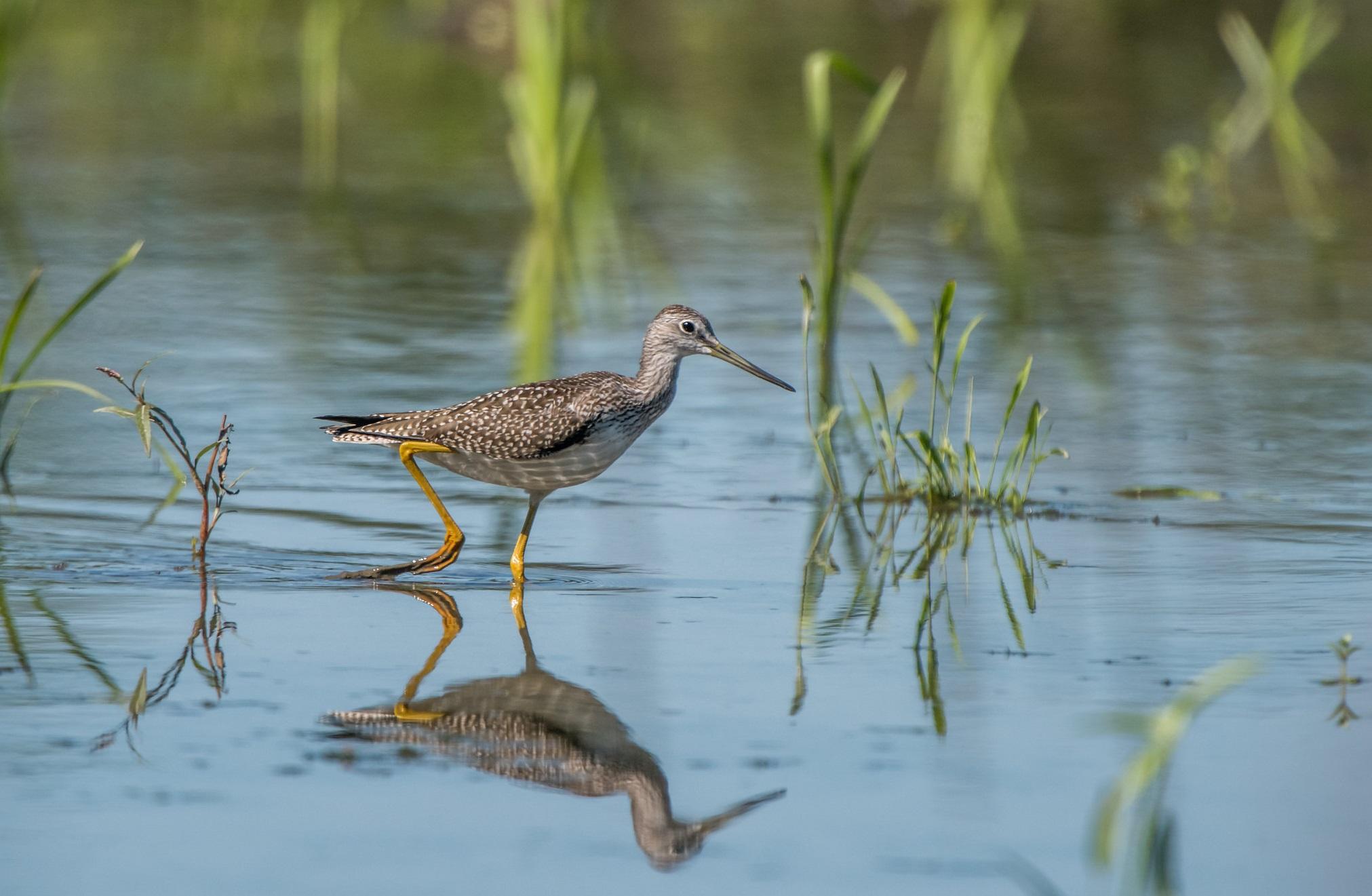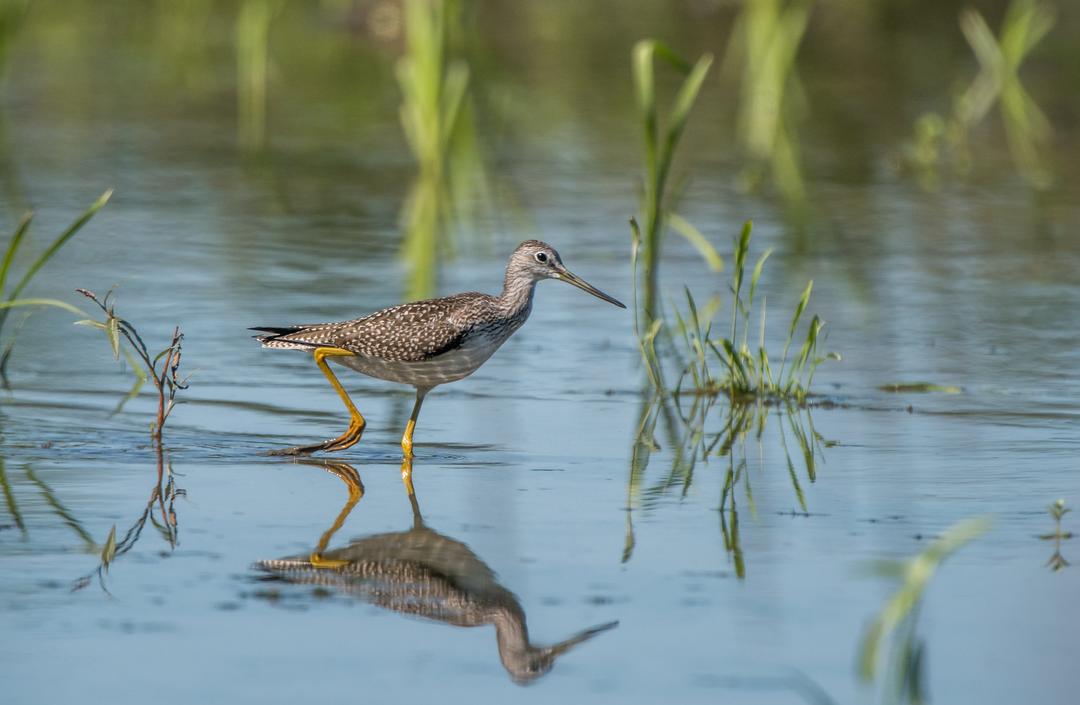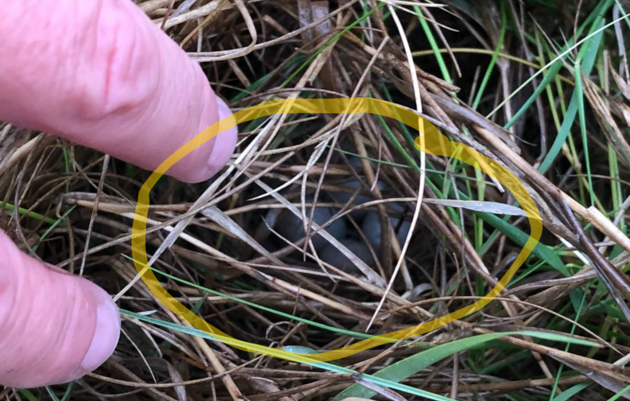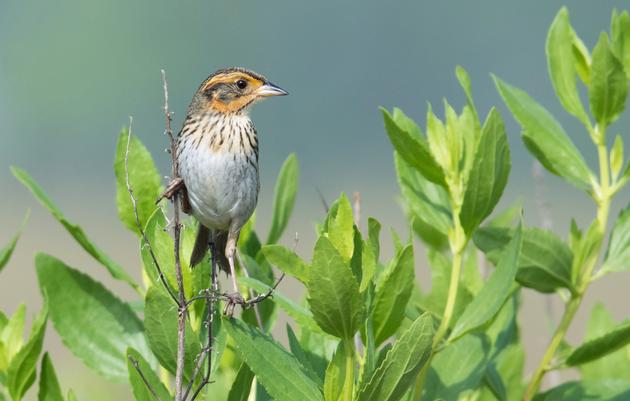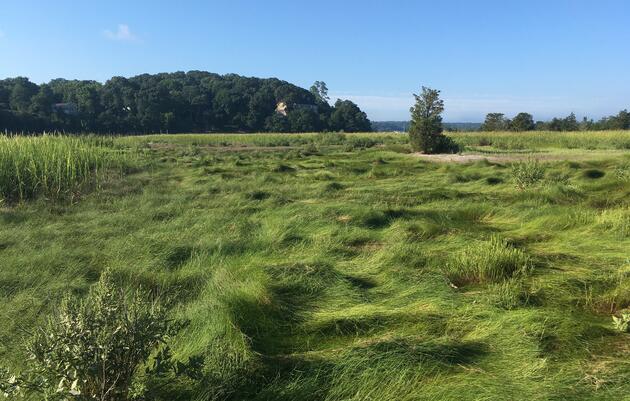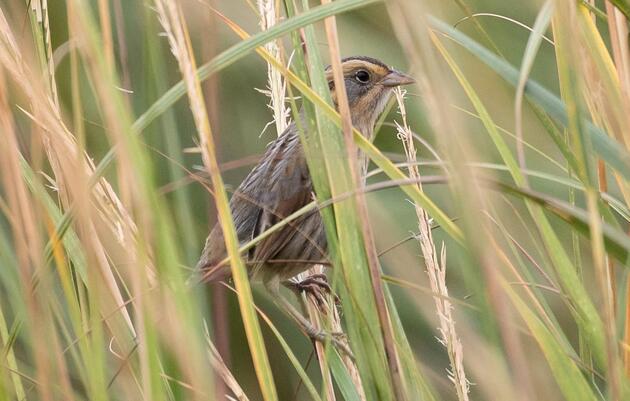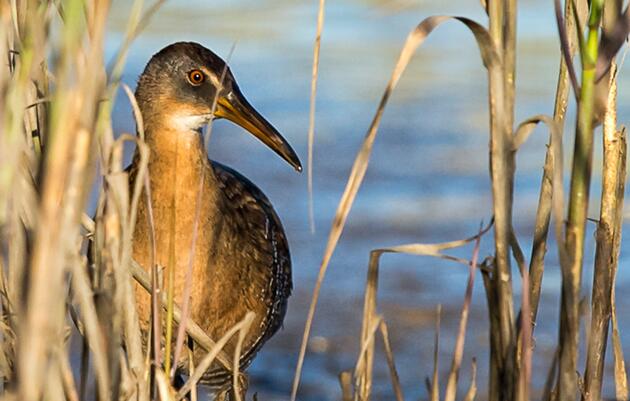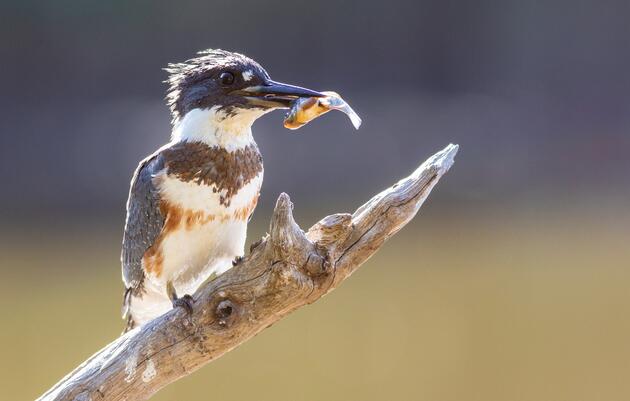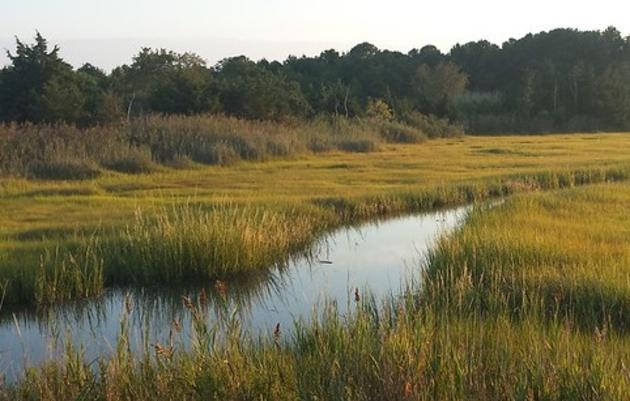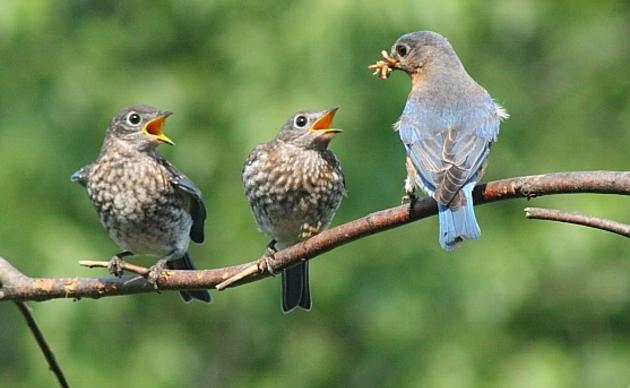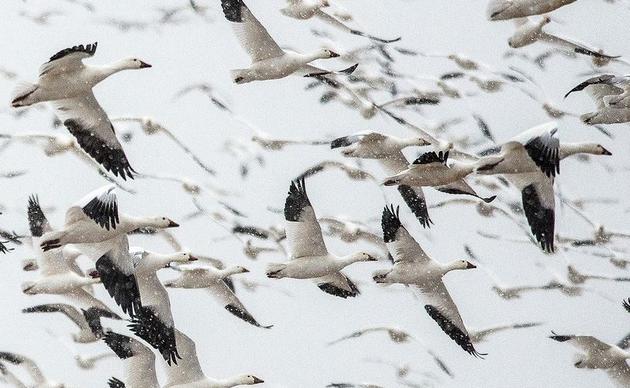Birds are tremendous indicators of ecological health. Declines in air quality were signaled by acid rain effects on Wood Thrushes in the Northeast, and pesticide contamination impacts were shown in declines of Bald Eagles. Our coastal resilience work uses marsh birds—the Saltmarsh Sparrow in particular—as an environmental mirror for the health of our coastal ecosystems and local communities.
The Long Island Sound and Atlantic Ocean coastlines and their associated marshes, islands and beaches are being squeezed by rising sea levels and human development. The ecosystem is too critical to the health of birds and people not to take action to protect it. It supports almost 25 percent of the Atlantic Coast breeding population of the Piping Plover, nearly 50 percent of the Roseate Tern global population, 12 percent of the Saltmarsh Sparrow global population, and the largest Common Tern nesting colony in the world. And, over seven percent of the entire population of the United States live within a 50 mile radius of the Sound.
Given its global importance and our deep experience working to protect birds along the coasts, Audubon is dedicated to building a resilient, healthy coast for the future.
LOCAL RESTORATION SITES
HOOK CREEK PARK, QUEENS
Together, Hook Creek Park and Idlewild Park are one of only three sites in NYC to provide significant Saltmarsh Sparrow nesting habitat. Unfortunately, historic ditching and filling, high nutrient loads, debris, and increased inundation have significantly degraded the marsh.
The first phase of work at Hook Creek consisted of a first-ever pilot project, wherein NYC Parks used equipment to shoot sand (sediment) from the hard non-marsh surface into the wetlands. This increased the marsh's base elevation, to help it keep up with sea level rise.
The second phase of the project added around 18,000 native plants to the marsh to restore breeding bird habitat - especially for the Saltmarsh Sparrow. Planted in higher ground thanks to the sediment placement, the new marsh grasses should thrive and the sparrows' nests should no longer drown in the high tides. An article about the project is published here.
Located northeast of John F. Kennedy International Airport in the Brookville/Rosedale neighborhoods of southeastern Queens, NYC, the park includes 160 acres of freshwater and tidal wetlands, woodland, meadow, and grassland dune-scrub habitat, and the largest remaining saltwater marsh in Queens. It is also an important recreational and green space resource for local urban residents: approximately 2.3 million people live in Queens, the fourth most densely populated county in the U.S. and the most ethnically diverse urban area in the world.
This grant award was made by the Wildlife Conservation Society (WCS) through its Climate Adaptation Fund. Support to establish the Climate Adaptation Fund was provided by a grant to the WCS from the Doris Duke Charitable Foundation.
SUNKEN MEADOW STATE PARK, LONG ISLAND
Sunken Meadow State Park’s tidal marsh complex is located west of the mouth of the Nisseqogue River and is part of a nearly 400-acre tidal marsh complex. The project site has approximately 78 acres of salt marsh, including 9 acres of high marsh habitat.
Since the 1950s, tidal restriction has degraded the habitat by restricting fish passage and promoting invasive Phragmites australis growth.
Hurricane Sandy did offer one positive outcome, as waters breached a berm and ended up restoring tidal flow to 135 acres of tidal wetland habitat. Since then, New York State Parks, Save the Sound, and partners have restored 3.5 acres of degraded low marsh habitat by removing invasive Phragmites australis and planting four acres of native marsh vegetation. Save the Sound also constructed two large storm water management ponds within a degraded parking lot to reduce runoff of pollutants and freshwater, further enhancing the assessment area.
The primary goal of this project is to increase the resiliency of salt marsh habitat, particularly high marsh habitat, which the Saltmarsh Sparrow depends on. We will conduct a Site Assessment and Preliminary Design project within an 83-acre area of the Sunken Meadow tidal marsh complex, ultimately designing a restoration project that targets high marsh and the needs of this rapidly declining bird species.
This project is supported by a grant from National Fish and Wildlife Foundation's Long Island Sound Futures Fund.
WATCH: OUR COASTS, OUR FUTURE
$700,000 Project Restores Salt Marsh and Bird Habitat in Queens
Audubon partners with NYC Parks, NYC Department of Environmental Protection, and neighborhood activists to improve Hook Creek Park.
New York's "Canary on the Coastline" Sings a Warning for Long Island
Fragile Saltmarsh Sparrow populations are the driving force behind a new focus on coastal resilience.
Salt Marsh Sites in the Long Island Sound Area are Showing Signs of Disruption
Big plans are moving forward to protect bird habitat and help local communities withstand stronger storms.
Long Island Marsh Site Selected for Urgent Restoration
Sunken Meadow State Park has the potential to support declining Saltmarsh Sparrows, in danger of extinction due to sea level rise.
Long Island Sound Area Conservation Strategy
A blueprint for protecting and managing 10,000 acres of priority salt marsh, beach, and island habitats.
10 Marsh Birds Teaching Us About Wetlands
From climate-related flooding to invasive species, marsh birds in New York face many threats.
WATCH: Coastal Resilience
Hear about the work Audubon is doing to make our coasts more resilient for birds and people.
Birds That Depend on Salt Marsh Habitat
Donate to Audubon
Help secure the future for birds at risk from climate change, habitat loss and other threats. Your support will power our science, education, advocacy and on-the-ground conservation efforts.

